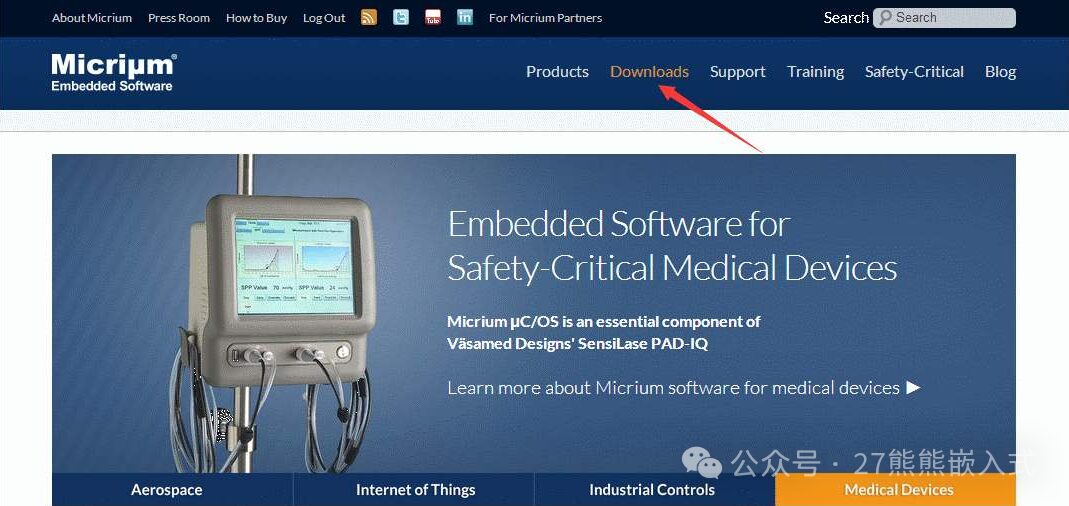1. What is RTOS
RTOS (Real-Time Operating System) is an operating system specifically designed to handle real-time tasks. It provides a way for embedded systems to manage tasks, schedule tasks, handle interrupts, and deliver real-time performance. Unlike general-purpose operating systems (like Windows or Linux), RTOS focuses on meeting the response time requirements of real-time systems.
Here are some key features of RTOS:
-
Real-time performance: One of the main features of RTOS is to provide real-time performance, meaning the system can respond to and process tasks within a specified time. This is crucial for applications that require timely execution, such as aerospace, automotive control, medical devices, etc.
-
Task scheduling: RTOS can efficiently schedule multiple tasks, ensuring that high-priority tasks can execute quickly when needed, while low-priority tasks do not block high-priority tasks.
-
Interrupt handling: RTOS typically has a flexible interrupt handling mechanism that allows timely responses to hardware events. This is essential for processing real-time events (like sensor data, communication, etc.).
-
Resource management: RTOS provides effective resource management, including memory management, task synchronization, communication mechanisms, etc. This helps ensure that system resources are utilized effectively.
-
Predictability: One goal of RTOS design is to provide predictability, meaning the execution time and response time of tasks are measurable and controllable. This is vital for real-time systems as it ensures the system can meet its deadline requirements under any circumstances.
-
Real-time scheduler: RTOS usually has a dedicated real-time scheduler that arranges task execution based on task priority and deadlines.
-
Small size: Since embedded systems often have limited resources, RTOS is usually designed to be lightweight and small in size to fit these resource-constrained environments.
Common RTOS includes FreeRTOS, VxWorks, RTOS-32, μC/OS, etc. Different RTOS are suitable for different application scenarios, and choosing the right RTOS depends on the specific requirements of the system and hardware constraints.
2. Advantages of Using RTOS for Embedded Development
Using RTOS (Real-Time Operating System) for embedded development offers many advantages, especially in applications with high real-time requirements. Here are some advantages of using RTOS for embedded development:
-
Real-time performance: RTOS focuses on providing predictable and controllable task execution times, ensuring the system can respond to and process tasks within the specified time. This is critical for real-time applications (like automotive control, medical devices, industrial automation, etc.).
-
Task scheduling: RTOS has an efficient task scheduling mechanism that arranges task execution based on task priority and deadline requirements. This allows high-priority tasks to execute quickly when needed, ensuring the system’s real-time performance.
-
Interrupt handling: RTOS provides a flexible interrupt handling mechanism that enables the system to respond quickly to hardware events. This is crucial for processing sensor data, communication, and other real-time events.
-
Resource management: RTOS provides effective resource management mechanisms, including memory management, task synchronization, communication mechanisms, etc. This helps ensure efficient utilization of system resources and avoid resource contention.
-
Multi-task support: RTOS allows multiple tasks to run simultaneously, with each task able to independently execute its functions. This enhances the modularity and maintainability of the system.
-
Portability: RTOS is typically designed to be portable, allowing it to run easily on different hardware platforms. This makes embedded systems more flexible and adaptable to different hardware architectures.
-
Scalability: The design of RTOS allows the system to be easily expanded when needed. New tasks, interrupt service routines, etc., can be easily added to accommodate changes in system functionality.
-
Development efficiency: Using RTOS can improve development efficiency, as RTOS provides standardized functions and services, allowing developers to focus more on application logic rather than low-level system management.
-
Error isolation: The task isolation and error handling mechanisms of RTOS enable the system to better handle exceptional situations, thereby improving system reliability and stability.
Overall, RTOS provides strong support in real-time, multi-tasking, resource management, and responsiveness, making it a powerful tool in embedded system development.
3. Advantages of Operating Systems
Operating systems (OS) play a critical role in computer systems, providing applications with an abstract, user-friendly runtime environment. Here are some advantages brought by operating systems:
-
Resource management: The operating system effectively manages computer hardware resources, including the central processing unit (CPU), memory, hard disk, network interfaces, etc. This resource management ensures that applications can share and utilize system resources, enhancing overall system efficiency.
-
Task scheduling: The operating system is responsible for scheduling multiple tasks running on the computer. Task scheduling ensures that tasks can reasonably share CPU time to improve overall system throughput and response speed.
-
User interface: The operating system provides an interface for users to interact with the computer system, which can be a graphical user interface (GUI) or a command-line interface. This allows users to conveniently interact with the computer, run programs, manage files, etc.
-
File system: The operating system provides a file system that allows users to organize and store data. The file system also provides read and write operations for files, making it easy to store, retrieve, and share data.
-
Device drivers: The operating system communicates with hardware devices through device drivers. This allows applications to interact with devices through a generic interface without needing to worry about the specific details of the hardware.
-
Memory management: The operating system is responsible for managing computer memory, including memory allocation and deallocation. This ensures memory isolation between different applications and prevents them from interfering with each other.
-
Security: The operating system provides access control and security mechanisms for system resources to protect the system from unauthorized access. This includes user authentication, file permissions, encryption, and other security measures.
-
Network support: The operating system provides support for network protocols, enabling computers to connect to networks and communicate. This supports distributed systems, remote access, and internet applications.
-
Error handling and fault tolerance: The operating system can handle error situations in the system, providing appropriate error messages and recovery mechanisms. Some operating systems also have certain fault tolerance capabilities, allowing the system to maintain normal operation under partial error conditions.
-
Multi-task support: The operating system enables multiple tasks to run in parallel, improving system utilization. This is crucial for modern computer systems that need to run multiple applications simultaneously.
4. Comparison of Common RTOS Advantages
FreeRTOS:
-
Advantages: Open source, lightweight, suitable for embedded systems. It has a small kernel size, suitable for resource-limited systems. Widely supports various processor architectures;
-
Applicable scenarios: Suitable for small embedded systems with good real-time performance;
μC/OS:
-
Advantages: Open source, portable, supports multi-processor. There are two versions: μC/OS-II and μC/OS-III, suitable for different levels of complexity and real-time requirements;
-
Applicable scenarios: Suitable for medium and small embedded systems, with different kernel versions to meet various needs;
rt-thread:
-
Advantages: Open source, lightweight, rich features and components, community support;
-
Applicable scenarios: Suitable for embedded systems, especially in resource-constrained applications with high real-time requirements;
The differences among various RTOS are minimal, and comparability is not significant.
5. Official Websites
1. UCOS Official Website
Website: https://www.micrium.com/

2. RT-Thread
Website: https://www.rt-thread.org/

3. FreeRTOS
Website: https://www.freertos.org/

6. Recommended Code Framework
1. One task manages one piece of hardware.
2. Use message queues for data transfer between tasks or between tasks and interrupts.
3. Use mutexes for shared resource access between tasks.
4. Use semaphores for task synchronization.
5. Use event flag groups for managing flags.
6. Write a dedicated task to initialize hardware, which can include the functionality to create tasks.
-
Previous Content Recommendations
-
How much do you know about interrupts?
-
What are push-pull and open-drain?
-
What is the clock of STM32?
-
The History and Evolution of SPI Protocol
-
Do you know about UART?
-
Collection of Electronic Memes [LOL]
That concludes this sharing session. Thank you for your patience. Follow us to improve your learning efficiency.
Thank you all for your support! Following us can enhance your learning efficiency!See you next time!

Follow our public account and reply with “motor” to receive FOC motor control materials.